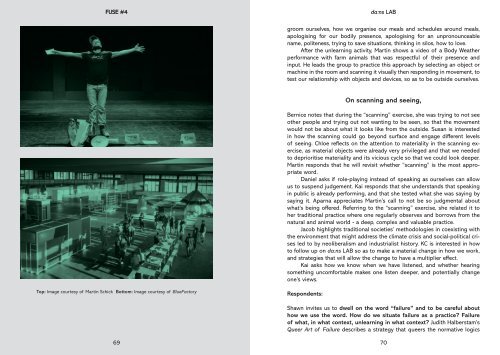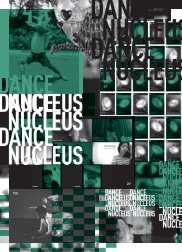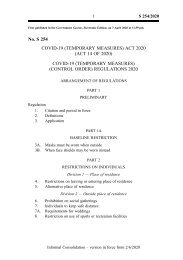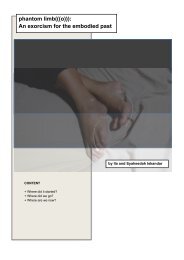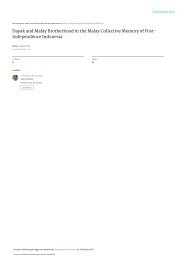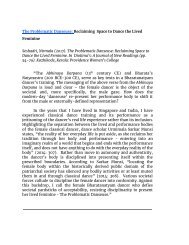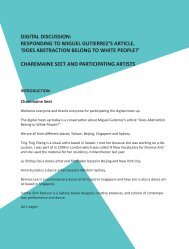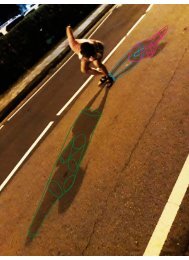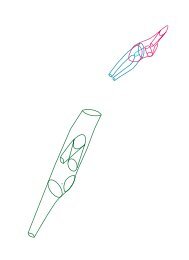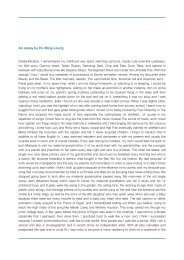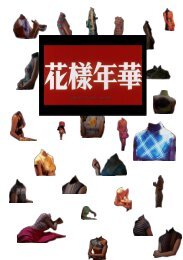FUSE#4
FUSE is a bi-annual publication that documents the projects at Dance Nucleus .
FUSE is a bi-annual publication that documents the projects at Dance Nucleus .
You also want an ePaper? Increase the reach of your titles
YUMPU automatically turns print PDFs into web optimized ePapers that Google loves.
FUSE #4<br />
da:ns LAB<br />
groom ourselves, how we organise our meals and schedules around meals,<br />
apologising for our bodily presence, apologising for an unpronounceable<br />
name, politeness, trying to save situations, thinking in silos, how to love.<br />
After the unlearning activity, Martin shows a video of a Body Weather<br />
performance with farm animals that was respectful of their presence and<br />
input. He leads the group to practice this approach by selecting an object or<br />
machine in the room and scanning it visually then responding in movement, to<br />
test our relationship with objects and devices, so as to be outside ourselves.<br />
On scanning and seeing,<br />
Bernice notes that during the “scanning” exercise, she was trying to not see<br />
other people and trying out not wanting to be seen, so that the movement<br />
would not be about what it looks like from the outside. Susan is interested<br />
in how the scanning could go beyond surface and engage different levels<br />
of seeing. Chloe reflects on the attention to materiality in the scanning exercise,<br />
as material objects were already very privileged and that we needed<br />
to deprioritise materiality and its vicious cycle so that we could look deeper.<br />
Martin responds that he will revisit whether “scanning” is the most appropriate<br />
word.<br />
Daniel asks if role-playing instead of speaking as ourselves can allow<br />
us to suspend judgement. Kai responds that she understands that speaking<br />
in public is already performing, and that she tested what she was saying by<br />
saying it. Aparna appreciates Martin’s call to not be so judgmental about<br />
what’s being offered. Referring to the “scanning” exercise, she related it to<br />
her traditional practice where one regularly observes and borrows from the<br />
natural and animal world - a deep, complex and valuable practice.<br />
Jacob highlights traditional societies’ methodologies in coexisting with<br />
the environment that might address the climate crisis and social-political crises<br />
led to by neoliberalism and industrialist history. KC is interested in how<br />
to follow up on da:ns LAB so as to make a material change in how we work,<br />
and strategies that will allow the change to have a multiplier effect.<br />
Kai asks how we know when we have listened, and whether hearing<br />
something uncomfortable makes one listen deeper, and potentially change<br />
one’s views.<br />
Top: Image courtesy of Martin Schick Bottom: Image courtesy of BlueFactory<br />
Respondents:<br />
Shawn invites us to dwell on the word “failure” and to be careful about<br />
how we use the word. How do we situate failure as a practice? Failure<br />
of what, in what context, unlearning in what context? Judith Halberstam’s<br />
Queer Art of Failure describes a strategy that queers the normative logics<br />
69 70


